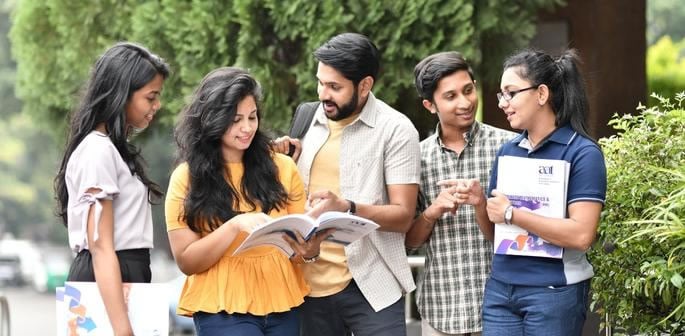Why are Indian Students Studying in the UK?

For many Indian students, there is an aspiration to travel abroad for university and work.
Places at India’s top universities are competitive and graduate jobs are dim.
India’s economy might be the fifth largest in the world but unemployment topped eight per cent in April 2023, with graduate unemployment at approximately 18%.
In 2022, 770,000 Indian students studied abroad and of those, 140,000 went to the UK.
According to the Office for National Statistics, nearly 25% of all visas were granted to Indian nationals and 55% of those were for students.
For Indian students, it has always been a choice between the UK and the USA.
But it is still only a small percentage that study abroad due to the high fees involved.
Many families make huge sacrifices to send their children overseas to university, often taking on huge personal debt, with the belief that it is a worthwhile investment.
There is also the unregulated business of agents who help Indian students get into British and American universities, often at a heavy cost.
In the UK, around 70% of Indian students are there for postgraduate courses.
One of those is Trisha Uberoi, who is originally from Delhi.
She studied Business at the University of Nottingham in 2015 and then went on to do a Master’s at the University of Bath in Innovation and Technology Management.
She now lives in London, working for a sustainability software company.
Trisha decided to study abroad because she wanted to break out of India’s social restrictions, choosing the UK over the USA because of the lower cost and less competitive application process and the fact it was a little closer to home.
She said: “Living in India I always felt very restricted.
“Even though I come from an extremely relatively open-minded, progressive family, I still really felt the weight of judgment and rules that never felt logical for me.
“Studying in the UK felt like my way out.”
The number of Indian students studying in the UK was in decline.
Political pressure under Theresa May’s Conservative government turned foreign students into targets in the game of political football over immigration statistics in a bid to create “net zero student migration”.
But that all changed after Brexit when the UK vowed to increase its international student intake up to 600,000 by 2030.
As recruitment of foreign students increased, Indian students returned to UK universities in their numbers and immigration lawyers in Delhi said inquiries about UK student and work visas had rocketed.
Post-2020, the number increased even further when a two-year post-study work visa was reintroduced for graduate students.
In 2022, an agreement was signed between the UK and Indian governments to mutually recognise academic qualifications, also making the UK more attractive for Indian students.
For Trisha, finding a job in the UK after graduation was her “main goal” as she felt India did not have the job opportunities she aspired to.
After internships in the House of Lords and Cobra Beer, a tech company offered to sponsor her skilled work visa.
Nevertheless, this was not the trend among fellow Indian students.
Sanam Arora, founder and chair of the National Indian Students Association UK, said that the main draw was the ability to secure a post-work study visa, so they didn’t have to return home immediately.
She told The Guardian: “Though there is this entrepreneurial spirit in India, there are also major concerns around unemployment, particularly in securing technical jobs for graduates, so the ability to get a few years work experience abroad after graduating is seen as very important.”
Lord Karan Bilimoria, Chancellor of the University of Birmingham, added:
“Covid has affected the whole world, and also the Ukraine-Russia war.
“We have had three years of a global crisis like we haven’t seen since the Second World War.
“It has affected every country and economy in the world. It has affected every sector of the economy.
“So of course, study abroad has been affected, but even then we hit our target of 600,000 within the pandemic, and now we have crossed it to 690,000, and Indians continue to be the most number of international students in the UK.”
This arrangement was beneficial for the UK, as the majority of Indian students come to the UK to study science, technology, engineering and mathematics, areas in which job vacancies in the UK often go unfulfilled for months.
Sanam warned that any attempts by Rishi Sunak’s government to return to previous policies of targeting international students as a way to bring down net migration was shortsighted.
She called for students to be removed from net-migration statistics and instead be counted as temporary migrants, as happens in the US and Australia.
Critics have also warned that it risks undermining the UK’s ongoing trade deal negotiations with India.
One of the key issues for India is increased access for its skilled workers to UK work visas.
Recent agreements have aimed to boost legal routes for Indians to come to the UK.
This included the creation of an Indian young professionals scheme, where 2,400 Indians with a degree are granted, through a ballot system, a visa to work, study and travel in the UK.
India is also the second largest foreign investor in the UK, with Indian companies and projects creating more than 8,600 jobs in 2022.
This means that any crackdown on skilled work visas is likely to prove unpopular with the Indian government and the Indian business community.
Sanam said: “It took a lot of work from the higher education sector to rebuild the UK’s reputation for international students.
“There’s a worry with all this flip-flopping that it will again create this distrust among Indian students, who are made to feel like commodities or cash cows.”